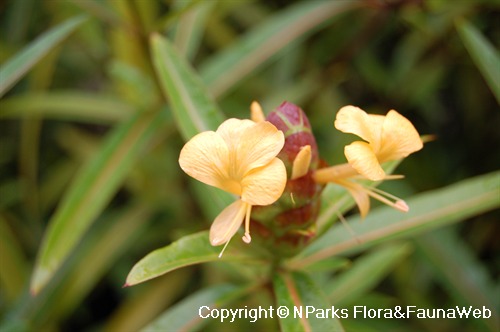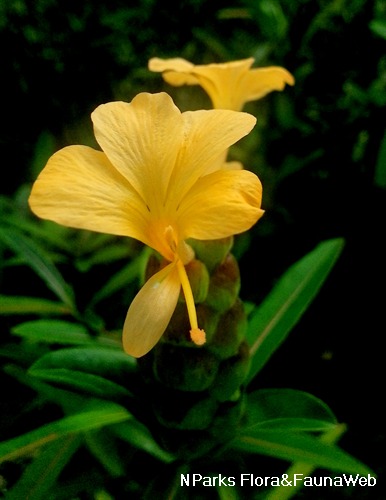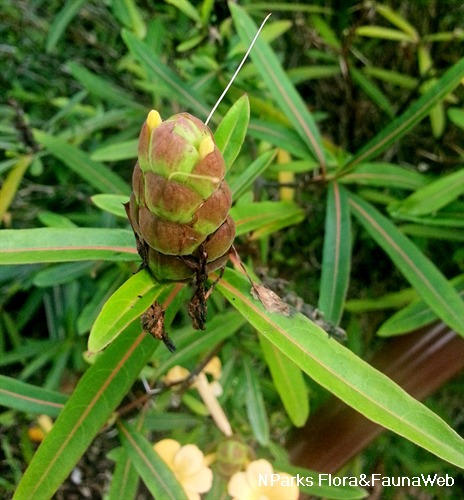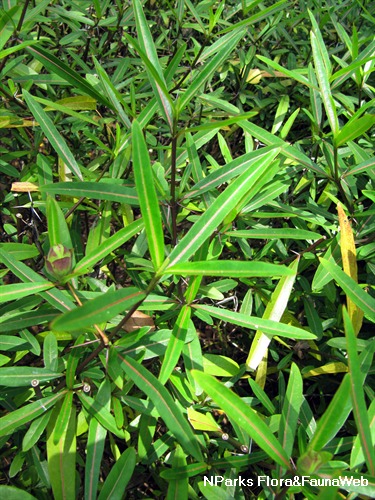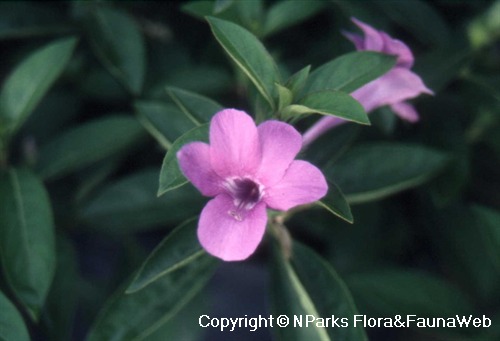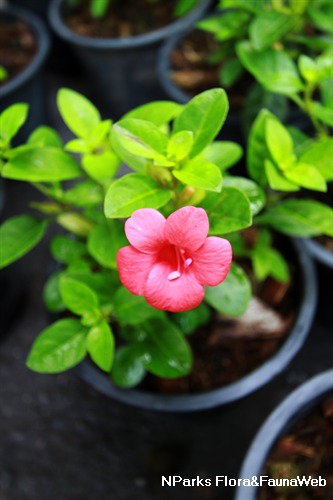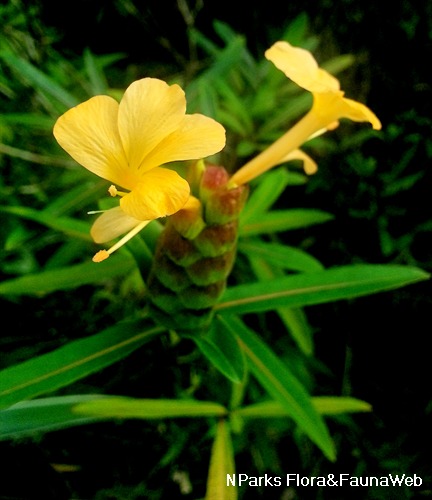
Back
Barleria lupulina
| Family Name: | Acanthaceae |
| Common Name: | Hop-headed Barleria, Setawar Sekelian Biasa, 花叶假杜鹃 |
Name
Classifications and Characteristics
| Plant Division | Angiosperms (Flowering Seed Plants) (Dicotyledon) |
|---|---|
| Plant Growth Form | Shrub |
| Lifespan (in Singapore) | Perennial |
| Mode of Nutrition | Autotrophic |
| Maximum Height | 1.5 m |
Biogeography
| Native Distribution | India & Myanmar |
|---|---|
| Native Habitat | Terrestrial |
| Preferred Climate Zone | Tropical, Sub-Tropical / Monsoonal |
| Local Conservation Status | Non-native (Horticultural / Cultivated Only) |
Description and Ethnobotany
| Growth Form | Shrub up to 1.5 m tall. |
|---|---|
| Foliage | Dark green, hairless leaves (3 - 9.5 cm long, 0.9 - 1.4 cm wide) are linear-oblong (elongated with parallel sides). They have a red midrib and 0.6 cm long petiole (leaf stalk). |
| Stems | Hairless, highly branched stems are 4-sided and spiny. Spines occur in pairs of up to 3 sets in the leaf axils (the space between the upper surface of the leaf and the stem). |
| Flowers | Yellow, tubular flowers (3 cm long) are arranged in spike inflorescences up to 9 cm long. The stamens (male, pollen-bearing part) are longer than the floral tube and extend past the opening. |
| Fruit | Dry, dehiscent fruit is known as a capsule. |
| Ethnobotanical Uses | Medicinal: Barleria lupulina is a popular medicinal plant in India. In folk medicine, the leaves are used to reduce inflammation caused by insect bites, snake bites, boils, and rheumatism. |
Landscaping Features
| Desirable Plant Features | Ornamental Flowers |
|---|---|
| Landscape Uses | General, Parks & Gardens, Container Planting |
Plant Care and Propagation
| Light Preference | Full Sun |
|---|---|
| Water Preference | Moderate Water |
| Plant Growth Rate | Moderate |
| Rootzone Tolerance | Moist Soils, Well-Drained Soils |
| Propagation Method | Seed |
Foliar
| Foliage Retention | Evergreen |
|---|---|
| Mature Foliage Colour(s) | Green |
| Mature Foliage Texture(s) | Smooth |
| Foliar Type | Simple / Unifoliate |
| Foliar Arrangement Along Stem | Whorled |
| Foliar Attachment to Stem | Petiolate |
| Foliar Shape(s) | Non-Palm Foliage (Oblong, Linear) |
| Foliar Venation | Pinnate / Net |
| Foliar Margin | Entire |
| Foliar Apex - Tip | Mucronate, Obtuse |
| Foliar Base | Cuneate |
| Leaf Area Index (LAI) for Green Plot Ratio | 4.5 (Shrub & Groundcover - Dicot) |
Floral (Angiosperm)
| Flower Colour(s) | Yellow / Golden |
|---|---|
| Flower Grouping | Cluster / Inflorescence |
| Flower Location | Terminal |
| Flower Symmetry | Bilateral |
| Individual Flower Shape | Tubular |
| Inflorescence Type | Spike |
| Inflorescence Size | 9 cm |
Fruit, Seed and Spore
| Fruit Classification | Simple Fruit |
|---|---|
| Fruit Type | Dehiscent Dry Fruit , Capsule |
Image Repository
Others
| Master ID | 423 |
|---|---|
| Species ID | 1719 |
| Flora Disclaimer | The information in this website has been compiled from reliable sources, such as reference works on medicinal plants. It is not a substitute for medical advice or treatment and NParks does not purport to provide any medical advice. Readers should always consult his/her physician before using or consuming a plant for medicinal purposes. |

